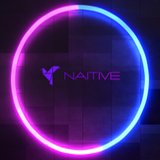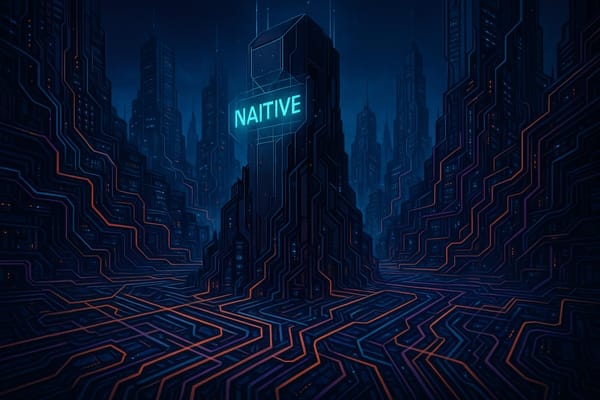Beyond Buzzwords: My Surprising Lessons from the Wild World of Reasoning Prompt Engineering in 2025

I never thought I’d get excited about the words I type into an AI, but here we are: it’s 2025, and prompt engineering has become the unlikely rockstar of my work life. Flashback: I nearly lost critical sleep puzzling over why my carefully crafted prompts turned my Large Language Models into either babbling poets or robotic accountants—anything but trustworthy problem solvers. Then came the deluge of new techniques, each with more acronyms and ‘thought’ flavors than a trendy coffee shop menu. Honestly, picking the right approach started to feel less like science and more like mystical matchmaking. But as I leaned into the process, and with a nudge from Adaline Labs’ data-driven community, I uncovered some mind-bending—and incredibly practical—truths about how, when, and *why* certain reasoning prompt engineering techniques actually make AI work smarter (and, sometimes, more expensively).
Prompting in the Wild: Why (and How) I Stopped Fearing Failure
My journey with Large Language Models began like many others: chasing the mythical “perfect” AI response. I’d tweak prompts endlessly, convinced that a few magic words would unlock flawless logic and zero hallucinations. Instead, I found myself knee-deep in support tickets, compliance scares, and late-night debugging sessions—especially after one unforgettable incident involving a hallucinated legal memo that nearly went to a client. That night, as I scrambled to fix the mess, I realized the hard truth: prompt engineering is never just about the AI—it’s about the cost of being wrong, and the opportunity of being right.
In those early days, I leaned heavily on zero-shot prompting. It was fast and simple, but the results were unpredictable. Without examples, the model often missed context, and my error rates soared. When I tried Chain-of-Thought (CoT) prompting, I saw a jump in logical analysis and transparency, but I also hit a wall: CoT failed on the first attempt 60% of the time, especially on complex tasks. Each failure meant more wasted hours and higher costs—real business impact that went far beyond theoretical accuracy.
The landscape exploded with options: Few-shot, Self-Consistency, Tree-of-Thought (ToT), ReAct, Least-to-Most, Decomposed, ART. Each method promised better AI prompt accuracy, but also brought new complexity. I remember the chaos of trying to choose the right technique for each use case—should I pay for ToT’s 74% success rate on tricky problems, or stick with CoT and accept more debugging? Was it worth the extra $0.70 per call for premium ToT, or should I optimize for cost with zero-shot at $0.009? The choices felt endless, and the stakes were high.
That late-night legal memo debacle was a turning point. I’d used a basic zero-shot prompt for a regulated task, hoping for speed. The result: a hallucinated citation and a near-miss with compliance. I realized I needed to move from “prompt perfectionism” to practical, iterative reasoning prompt engineering. Adaline Labs’ research-backed newsletter hammered this home: track not just accuracy, but real business metrics like cost per call, error rates, and downstream support impact.
I started experimenting more systematically. I’d deploy a Chain-of-Thought prompt for auditable logic, but if the first attempt failed (as it often did), I’d switch to Tree-of-Thought for higher accuracy—accepting the higher token cost when the stakes justified it. I learned to match the prompt engineering best practices to the task: zero-shot for quick prototypes, few-shot for format-critical work, and advanced methods like ToT or ART for complex, high-value features.
Prompt engineering is never just about the AI—it’s about the cost of being wrong, and the opportunity of being right. — Adaline Labs
From 2022 to 2025, every prompt mistake taught me something new: the importance of transparency, the real cost of failure, and the value of tracking both technical and business outcomes. By embracing failure as part of the process, I stopped fearing it—and started building more robust, trustworthy AI solutions.
The Prompting Playbook: When to Trust the Usual Suspects (and When to Get Weird)
As I dove into reasoning prompt engineering in 2025, I quickly realized that picking the right technique is a lot like assembling a band: you don’t call in the whole orchestra for a three-chord song. The art is in matching the prompt method to the task—balancing cost, complexity, and business need. Here’s my rapid-fire breakdown of the nine essential techniques, with honest notes on when to trust the classics and when to get creative.
- Zero-shot Prompting (
$0.009/call):
Nimble, cheap, and perfect for simple tasks or quick prototyping. It’s the solo guitarist—fast, but don’t expect magic on complex tunes. Accuracy lags behind Few-shot by up to 15%. Add cues like “Let’s think step by step” for a small boost. - Few-shot Prompting (
$0.019/call):
Brings in a few backup singers (2–5 examples), making it ideal for domain-specific work like legal or technical writing. It costs a bit more, but delivers a noticeable accuracy bump. Bad examples, though, can tank performance. - Chain-of-Thought Prompting (
$0.022/call):
Think of this as a jazz ensemble improvising step-by-step. It’s essential for auditable, complex logic—especially in regulated industries. Token usage and latency go up, so don’t use it for basic tasks. - Self-Consistency Prompting (
$0.154/call):
My pick for “most misunderstood.” It samples multiple reasoning paths and votes on the answer, boosting accuracy in critical fields like finance or medicine. But the cost and sluggish speed are jaw-dropping—think of hiring a full orchestra for every note. - Tree-of-Thought Prompting (
$0.70/call):
Explores multiple solution branches in parallel, like a band jamming on several melodies at once. It’s brilliant for creative or strategic tasks, but the token cost is sky-high. Save it for your most complex challenges. - ReAct Prompting (
$0.040/call):
Interleaves reasoning with real-time tool calls, grounding outputs in live data. It’s your go-to for research and fact-checking, but API reliability can make or break the performance. - Least-to-Most Prompting:
Breaks big problems into smaller steps, supporting generalization and easier debugging. It’s great for educational or multi-step workflows, but overkill for simple tasks. - Decomposed Prompting:
Assigns sub-tasks to specialized handlers, making debugging and reuse easier in enterprise pipelines. However, it adds management overhead. - Automatic Reasoning and Tool-Use (ART) (
$0.05–$0.10/call):
The AI Swiss Army knife—models autonomously select and use external tools mid-reasoning. It’s adaptive and powerful, but introduces security and dependency risks.
Advanced methods are tempting, but sometimes less really is more. — Adaline Labs
Prompt Optimization and Cost Analysis Prompting are now core to my workflow. Zero-shot and Few-shot remain foundational—quick, affordable, and effective for straightforward needs. Chain-of-Thought Prompting and Tree-of-Thought unlock deeper problem-solving, vital for regulated sectors, but come with steep costs. ReAct Prompting and ART shine for real-time data and adaptive workflows, but only when their extra complexity and risk are justified. The key is to resist the urge to “go all-in” on fancy methods when a simple riff will do the job.
Where the Magic Happens: Iteration, Model Matchmaking, and Real-World Wins
If there’s one lesson I’ve learned from the frontlines of iterative prompt development in 2025, it’s this: Forget the myth of the “one perfect prompt.” Real progress in prompt engineering techniques comes from embracing the messiness of repeated testing, feedback, and adjustment. As Adaline Labs puts it:
Real progress isn’t about a magic prompt—it's about never settling for the first answer.
Prompt Iteration Best Practices: Why One-Shot Isn’t Enough
Early on, I fell into the trap of chasing the ideal prompt—tweaking a single instruction for hours, hoping for a breakthrough. But the data is clear: Iterative prompt optimization and real-world feedback loops boost AI reasoning accuracy by over 9%. Each cycle of testing, error analysis, and user feedback uncovers new edge cases and opportunities for improvement.
- Start simple: Launch with a basic prompt and observe real outputs.
- Gather feedback: Collect user reactions and flag model errors.
- Refine iteratively: Adjust instructions, add examples, or switch techniques based on what you learn.
- Monitor costs: Use tools like Adaline Labs’ ShareLLM-Cost Cheat-Sheet to balance accuracy and budget.
In one safety-critical workflow, I iterated prompts weekly, using ShareLLM-Cost to compare Chain-of-Thought and ReAct costs. This approach saved weeks of frustration, slashing support tickets and keeping us within budget.
AI Model Selection: The Surprise Hero of Prompt Optimization
Here’s what surprised me most: Model selection often trumps clever prompt design. The right model can multiply the effectiveness of your prompt—sometimes more than any wording tweak. For example:
- Claude 4: Excels at extended, auditable reasoning (regulatory, legal, or policy tasks).
- o3-mini: Dominates math-heavy workflows, posting 97.3% on MATH-500.
- Gemini 2.5 Pro: Balances complex logic and cost, ideal for enterprise deployments.
Matching the prompt engineering technique to the model’s strengths is a force multiplier. For instance, Tree-of-Thought with Gemini 2.5 Pro delivered a 74% success rate on creative planning tasks—far above what I achieved with default models.
Prompt Optimization in the Real World: Feedback, Cost, and Trust
The most sustainable improvements I’ve seen come from strategic, cost-aware experimenting—not over-engineering or sticking with “default” prompts. Ongoing user feedback and observed model failures are my compass, not just gut instinct or vendor hype. Benchmarks like OpenAI’s o3 hitting 87.5% on ARC-AGI show what’s possible when you combine smart iteration with model-prompt compatibility.
In practice, prompt iteration best practices mean:
- Testing multiple prompt engineering techniques (Zero-shot, Few-shot, CoT, etc.)
- Pairing each with the best-fit model for the task
- Tracking costs and accuracy with real-world data
- Letting ongoing user feedback drive continuous upgrades
Prompting isn’t a one-shot trick—it’s a journey of iterative prompt development, model matchmaking, and relentless improvement. That’s where the magic—and the real business wins—happen.
Wildcard Round: What I Wish I Knew (& the Prompt Disasters I’d Rather Forget)
Looking back on my journey through the ever-evolving world of reasoning prompt engineering in 2025, I realize that the real lessons—the ones that stick—come from the wildest surprises and the most memorable disasters. As much as I’ve benefited from Adaline Labs Research and their Prompt Engineering Guide, nothing teaches faster than a prompt gone wrong (or right, by accident). Here’s my honest take on the top mistakes, unexpected wins, and the single most important truth I wish I’d known from the start: customization beats perfection every time—and humor helps when things go sideways.
Let’s start with the compilation album of my top three prompt disasters. First, there was the time I trusted Chain-of-Thought prompting for a high-stakes compliance workflow—only to discover, too late, that the model’s “transparent logic” was confidently wrong, leading to a costly audit. Then came my overzealous attempt at Few-shot prompting in a legal domain, where a poorly chosen example tanked accuracy below even Zero-shot levels. But nothing compares to the infamous night when I unleashed ART (Automatic Reasoning and Tool-Use) on a live system. One flaky API, and the entire workflow collapsed—escalating support tickets, blowing through our budget, and nearly derailing the project. That disaster taught me that in regulated sectors, prompt failures aren’t just embarrassing—they’re expensive, and sometimes career-threatening.
But it’s not all doom and gloom. Some of my biggest wins came from unexpected places. I once used a simple Zero-shot prompt, with a dash of humor and a “Let’s think step by step” cue, to solve a customer support issue that had stumped more complex workflows. Another time, a playful tweak to a Decomposed prompting pipeline made debugging a breeze and won over a skeptical client. These moments hammered home a core lesson from Adaline Labs’ newsletter (now trusted by over 44,000 subscribers): Prompting is deeply contextual. The best results come from matching your technique to the task’s unique ‘personality’—not from chasing technical purity.
If I could give one piece of advice to anyone diving into advanced prompting methods, it’s this: treat prompt engineering like a cooking show. Sometimes you need the “Zero-shot speed round”—quick, cheap, and good enough for simple tasks. Other times, you’re in the “ART gourmet challenge,” orchestrating complex, multi-tool workflows where every ingredient (API, model, prompt structure) must be just right. The secret sauce? Iterate relentlessly, laugh at your failures, and never stop learning.
In the end, business value always trumps technical beauty. No one cares how elegant your prompt is if it drains your budget or misses the mark. That’s why I rely on resources like Adaline Labs for the latest research, benchmarking, and prompt iteration best practices. The field moves fast, and staying humble, curious, and a little bit playful is the only way to keep up—and to keep your sanity intact.
Customization beats perfection every time—and humor helps when things go sideways. — Adaline Labs
So here’s my conclusion: The real magic of prompt engineering isn’t in finding the “perfect” method, but in adapting, experimenting, and embracing the surprises—good and bad. That’s how you build AI solutions that are not just accurate, but resilient, transparent, and truly valuable in the real world.
TL;DR: Even the most advanced AI prompts aren’t magic bullets—they work best when matched to the right challenge, carefully iterated, and cost-justified. This field will keep surprising us, especially if we stay curious and keep sharing lessons.





